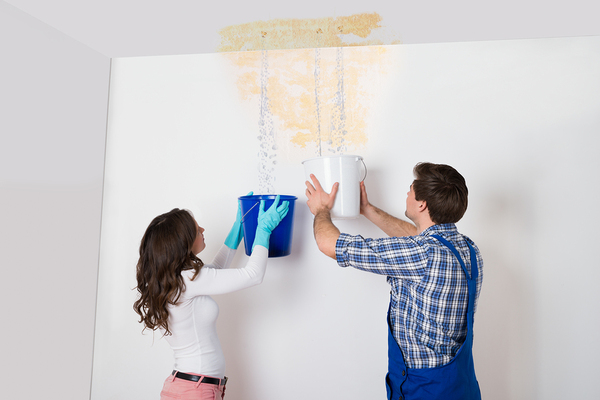Pinpoint Six of Commonest Leak Triggers Within Your House
Pinpoint Six of Commonest Leak Triggers Within Your House
Blog Article
How do you feel when it comes to Most Common Causes of Leaky Pipes?

Leaks not just create waste of water yet can additionally create unnecessary damage to your house as well as advertise undesirable natural growth. By looking as well as understanding for everyday scenarios that trigger leaks, you can safeguard your residence from future leakages and unneeded damages.
Trespassing roots
The majority of water leaks start outside your house rather than inside it. If you notice a sudden reduction in water pressure, say in your faucet, take some time to go out and also examine your yard. You could discover damp patches or sinkholes in your yard, which may imply that tree origins are getting into water lines creating water to seep out. You can have your plumber check for invasion, especially if you have trees or bushes near your property.
Corroded water systems
As time goes by, your plumbing system ages and corrosion such as rust may start eating away the pipelines. This may be the source of discoloration or bending on your water pipes. This calls for an examination with your plumber right away. Consider replacing the pipelines because they are at a greater risk of deterioration than the newer models if our plumbing system is old.
Malfunctioning Pipeline Joints
The factor at which your pipelines connect is frequently the weakest link in the waterline. Pipe joints can wear away gradually, resulting in water leakages. Regrettably, most of pipe joints are not quickly noticeable. If you have loud pipes that make ticking or banging noises, specifically when the hot water is switched on, your pipeline joints are possibly under a lot of pressure. It is suggested to have your plumber inspect your system yearly.
Immediate temperature level modifications.
Severe temperature level adjustments in our pipes can cause them to broaden and also contract suddenly. This growth and also tightening may trigger fractures in the pipes, specifically if the temperature are below freezing.
Poor Water Connectors
Sometimes, a leakage can be brought on by loosened tubes as well as pipes that provide your appliances. Most of the time, changing is what triggers the loosened water Connections. You could discover in the case of a cleaning equipment, a hose may spring a leak as a result of drinking throughout the spin cycle. In case of a water connections leak, you may notice water running directly from the supply line or puddles around your home appliances.
Blocked Drains
Clogged drains pipes might be bothersome and inconveniencing, yet they can in some cases wind up causing an overflow bring about rupture pipelines. Keep removing any materials that might drop your drains pipes that can clog them to prevent such inconveniences.
All the above are causes of leakages but not all water leakages result from plumbing leaks; some leaks could originate from roof leakages. All leaks should be fixed instantly to avoid water damage.
Leaks not only cause waste of water yet can also create unneeded damages to your house and promote unwanted organic growth. By looking and also comprehending for daily scenarios that cause leaks, you can secure your home from future leakages as well as unnecessary damage. Today, we will certainly look at 6 leakage triggers that may be causing your pipelines to leak.
At times, a leak can be triggered by loosened hose pipes and pipelines that supply your home appliances. In situation of a water links leakage, you might notice water running directly from the supply line or puddles around your home appliances.
How To Check For Water Leak In Your Home
How To Check for Leaks
The average household's leaks can account for nearly 10,000 gallons of water wasted every year and ten percent of homes have leaks that waste 90 gallons or more per day. Common types of leaks found in the home are worn toilet flappers, dripping faucets, and other leaking valves. These types of leaks are often easy to fix, requiring only a few tools and hardware that can pay for themselves in water savings. Fixing easily corrected household water leaks can save homeowners about 10 percent on their water bills.
To check for leaks in your home, you first need to determine whether you're wasting water and then identify the source of the leak. Here are some tips for finding leaks:
Take a look at your water usage during a colder month, such as January or February. If a family of four exceeds 12,000 gallons per month, there are serious leaks.
Check your water meter before and after a two-hour period when no water is being used. If the meter changes at all, you probably have a leak.
Identify toilet leaks by placing a drop of food coloring in the toilet tank. If any color shows up in the bowl after 10 minutes, you have a leak. (Be sure to flush immediately after the experiment to avoid staining the tank.)
Examine faucet gaskets and pipe fittings for any water on the outside of the pipe to check for surface leaks.
Undetected water leaks can happen without the home or business owner even realizing. If you suspect a water leak, but not able to find the source. It is time to contact a professional water leak detection service, The Leak Doctor.
How To Find a Water Leak In Your Home
https://www.leakdoctor.com/blog/How-To-Check-For-Water-Leak-In-Your-Home_AE197.html

I hope you liked our part about How Fast Water Damage Can Ruin Your Home. Thanks a lot for spending some time to browse our article post. Are you aware of somebody who is involved in the niche? Be sure share it. I enjoy reading our article about How to Find Water Leaks.
Solve it now, dial here! Report this page